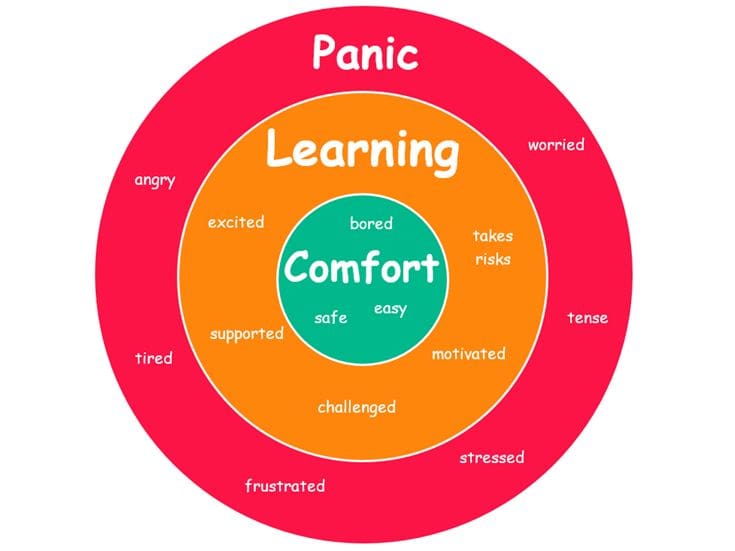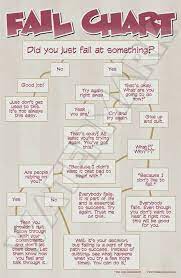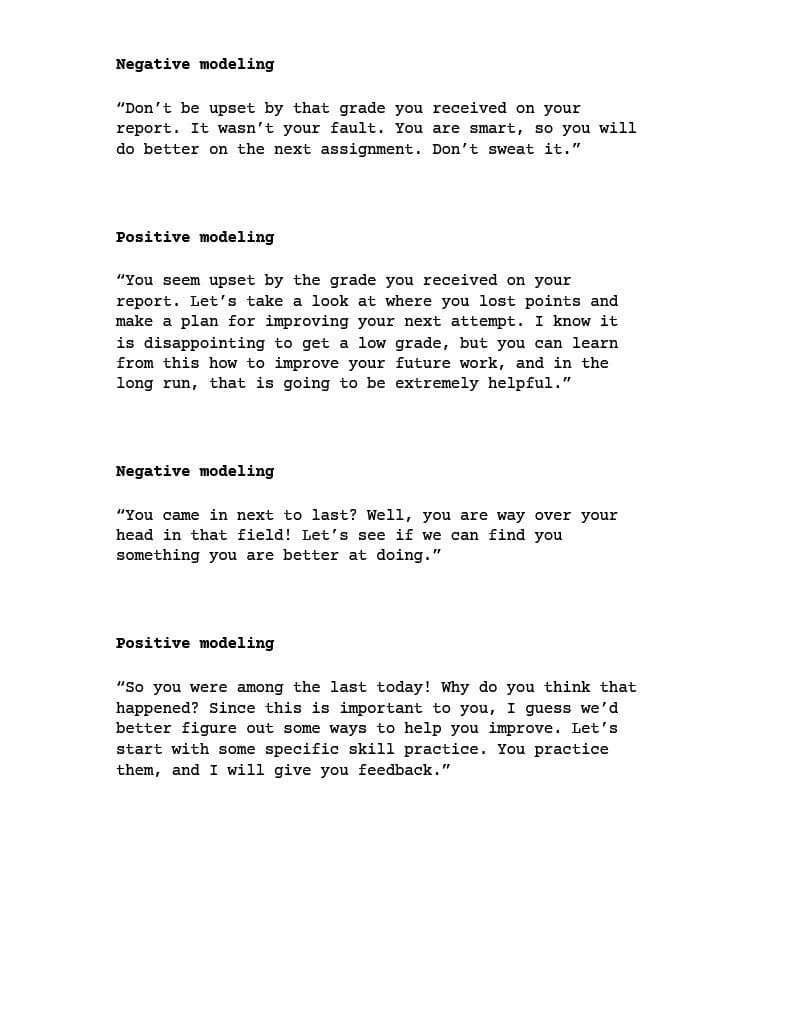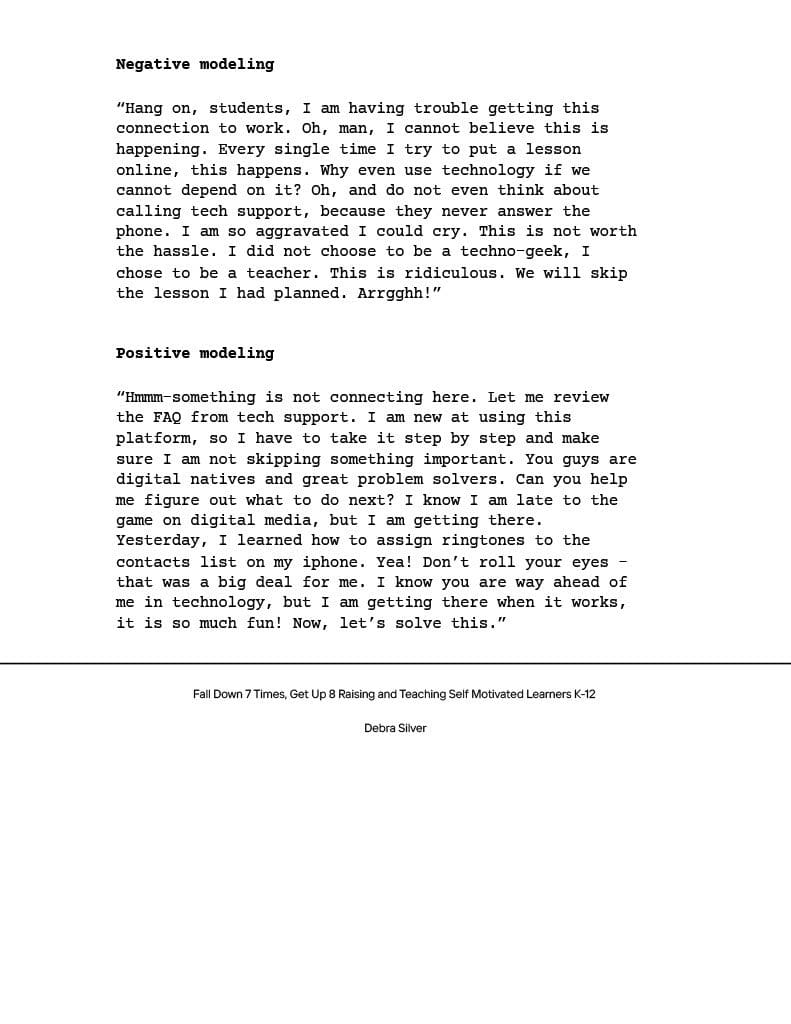
What Is Self-Efficacy with Student Agency?
Agency is a composite set of essential skills researchers refer to, as self-efficacy, planning, and acting, reflecting on learning, and having a growth mindset are important to long-term student success. This is explained in the book, Teaching Kids to Thrive, by Dr. Debbie Thomas Silver and Debra Stafford. Dr. Silver and Stafford cite educators and researchers at the University of Chicago. “This definition of agency acknowledges that external factors form real constraints, and also that people have the will and power to influence external factors and make choices about how to respond to constraints.” Dr. Silver and Stafford say, “In other words, students can be empowered to thrive through guidance on how to control those aspects of their lives they can change.”
What is Self-Efficacy?
Dr. Silver and Stafford cite Bandura’s definition of self-efficacy as “Efficacy beliefs influence how people feel, think, motivate themselves, and behave”. Dr. Silver and Stafford describe students with strong sense of self-efficacy have these traits:
-work harder
-try longer
-overcome obstacles
-bounce back more quickly from setbacks
-engage in tasks they feel confident in completing successfully
– usually withdraw from tasks for which they lack confidence
Dr. Silver and Stafford point out Self-Efficacy affects:
-the choice we make
-the effort we put forth (how hard we try)
– our perseverance (how long we persist when confronting obstacles)
– our resilience (how quickly we recover from failure or setbacks)
Dr. Silver and Stafford recall the familiar children’s story The Little Engine That Could (Piper, 1930) and the famous line “I think I can. I think I can.” This phrase is used by some as a model for positive thinking. However, Dr. Silver and Stafford believed something deeper was going on while little engine needed positive thinking. Dr. Silver and Stafford say, “little engine had a resolute belief that she could pull those heavily loaded cars of toys over the mountain.” Dr. Silver and Stafford continue to explain the little engine had a profound conviction if she gives enough effort, she could accomplish this feat. So the little engine had self-efficacy.
Dr. Silver and Stafford note the little engine had a plan of action because the little engine had both a plan of action and the skills to devise a way to meet her goal. The little engine fortified her assuredness with the self-message “I thought I could. I thought I could.”
Dr. Silver and Stafford also believe there is evidence little engine has a growth mindset. A growth mindset is a frame of mind that values effort and learning from mistakes according to Dr. Silver and Stafford. The little engine failed on her first try, but she would keep working and make incremental progress.
Dr. Silver and Stafford emphasizes to reinforce positive belief system in the classroom it needs to be bolstered with intrinsically held confidence of the learner and plan of action – student agency. Dr. Silver and Stafford pointed out little engine not only think she could, but she also acted with little engine agency.
I love the little engine analogy for self-efficacy and growth mindset. It makes it easy to understand and remember.
4 Ways Students Gain Self-Efficacy
Bandura (1985), cited by Dr. Silver and Stafford, describe four ways students gain self- efficacy:
- Mastery of learning experiences.
A strong way to boost students’ self-efficacy is to provide opportunities for genuine competency and a sense of earned accomplishment. Stretch students’ abilities is to use carefully design lesson strategies that provides structure and reinforcement.
2. Vicarious experiences.
Students observe or read about more successful peers or role models with whom they can relate. This way it adds to their feelings of self- efficacy.
3. Verbal persuasion.
Giving students guidance and feedback can boost students’ sense of control. This method is rarely as effective as the first two methods.
4. Physical and emotional states.
Both Physical and emotional states can influence perceptions positively and negatively. Formidable, emotions can have a spiraling effect. A teacher can maintain a stress-free classroom by helping students learn to regulate their moods (mindfulness). Teachers can also encourage good health habits in their students.
Dr. Silver and Stafford cite Annie Murphy Paul who contends that feeling of hopefulness can lead students to try harder and persist longer if the plans for meeting their goals are with a teacher. Both teacher and students formulate a plan ahead of time for how they will move forward when and if their original plans do not work out as expected. This is a valuable strategy for students who are easily discouraged or hesitant to try new things.
Learned Helplessness
Analogy to Winnie-the-Poo Eeyore – the gloomy little donkey. Students with little self-efficacy often manifest as learned helplessness.
Features of Learned Helplessness:
- Passive pessimist who consistently evidence victim mentality.
- Believe they have no power over what goes around them.
- Nothing contributes to their success or lack of it.
Dr. Silver and Stafford identify several ways parents of teachers can help students to unlearn helpless disposition:
- Help students understand that everyone has problems, fears, failures, and self-doubt. Share stories about people like those who have overcome similar or even harsher circumstances.
- Help learners attribute their success or lack of it to internal rather than external causes and show them how they have power over results.
- Treat students’ successes as though they are normal, not an isolated example or a fluke.
- Help learners seek alternative paths to success when they encounter a roadblock or setback.
- Help students learn the difference between hard work and strategic effort.
- Continually reinforce the idea that the students can work on things within their control, like effort and choices, and they can always control those parts of their lives.
- Concentrate on improvement rather than on a finite goal. Give frequent feedback on progress towards the goal.
- Keep the learner operating in the zone of proximal development (ZPD). Tasks that are too easy or too difficult will squash motivation.
- Help students understand that intelligence and talent are not permanent entities. They can be incrementally improved in everyone.
- Use feedback that is specific, constructive, and task specific.
A key to building self-efficacy and eventually student agency is to work within students’ Zone of Proximal Development (ZPD), where the student is pushed but not overwhelmed. Educators can develop plans to teach skills in the most effective manner. They can gradually encourage students to perform tasks independently by understanding what students can achieve alone, as well as what they can achieve with help from an adult. This process is called scaffolding. Scaffolding is a way in which an adult helps the child learner move incrementally from not yet performing a task to doing so without help.
5 Scaffolding Strategies to Bolster Student Learning video
Teachers have all seen each child in our classrooms:

- Learners operating in the Comfort Zone are students who complete the independent assignment while the teacher is still introducing the lesson. They are unmotivated and often bored in class. Children operating in this zone never learn what challenge feels like. When they reach the inevitable place where learning is no longer comfortable or easy, they often experience diminished self-efficacy and an inability to move forward.
- Learners operating in the Learning Zone are students with that lightbulb moment in class. They struggle, but it is a good struggle. The teacher is there to act as a facilitator and help them right the course as they learn. They are engaged on task, and after a little success eager to try the next problem or challenge on their own. The new information is resonating, and they are applying it in ways that are meaningful while gaining confidence with each new step. All children, despite thier ability level, deserve to be working in their Learning Zone. This experience is what fuels the fire of learning and propels them to the next challenge.
- Learners operating in the Frustration or Panic Zone are students who feel the pace of the classroom is too fast or the demands are too stringent. Students around them seem to know the answers, while still struggling to understand the question. In a classroom, these children are often carried along by teachers of other students, and no real learning is happening. These students often show learned helplessness and simply stop engaging out of frustration or fear of looking dumb.
Students’ Beliefs About Success (Attribution Theory)
How learners view their success or their lack of it is one of the major considerations in determining student self-efficacy and student agency. Do students attribute the result to external factors such as the difficulty of the task, an innate ability, talent, or luck? or do they attribute the result to the effort they put in? When students attribute their success or failure to external factors, they are essentially giving away their power. Dr. Silver and Stafford give a few examples of what students would say:
“Oh, I aced that test because it was easy.”
“Well, if I had a better teacher, I would not have missed all those problems.”
“That tryout was a piece of cake. I’ve always been good at this.”

Dr. Silver mentions in her book “Fall Down 7 Times Get Up 8” attribution theory incorporates the major tenets of self-efficacy, self-regulation, and cognitive theory. It is the cornerstone for self-motivation. Dr. Silver gives examples of each the four categories above:
- Task difficulty (e.g., “The test was too hard.” “I can’t do a job like that. I’m just thirteen!” “That assignment was way easy.”)
- Luck (e.g., “I was in the right place at the right time.” “I guessed correctly about what to study.” “I got stuck with the mean teacher this time.”)
- Innate ability or talent (e.g., “I’m just good at math.” “Being good at sports just runs in my family.” “I can’t dance-never could and never will.”)
- Effort (e.g., “I studied really hard, and I was prepared this time.” “I waited until the last minute to study.” “I didn’t put the time on this assignment I needed to.”)
Dr. Silver says the four categories represent the primary causal factors cited by individuals as explanations for their success or failure on certain tasks. Dr. Silver notes that 3 of the 4 of these have something in common that should be significant for teachers and parents. Dr. Silver asks, “Do you see it?”
Dr. Silver notes the first three attributes are all beyond the control of the learner because they are external factors that cannot be influenced by the student. Students are basically giving up their locus of control (their belief that they have power over what happens to them if they attribute their success or their lack of it to one of the first three factors.
The singular attribute a student can influence is effort. Dr. Silver believes that effort is the only factor that can be controlled by the learner. Dr. Silver cautions that when parents and teachers praise innate talent and/or luck, we reduce the student’s role in his success. If we let kids dismiss their low achievement because of task difficulty or other external factors, we are complicit in letting them off the hook. Dr. Silver says, “After all, they cannot control their genetic makeup, fate, or how hard or how easy the undertaking is.” It is important that adults can use it to help children accept responsibility for their success and failures. Dr. Silver emphasizes, “Students can learn how to empower themselves, rather than feel entitled or victimized.”
Failure? There is an “App” for That
The Most Inspirational Video You Will Ever See – Nick Vujicic’s Story
Does this sound familiar?
“Failure is often treated as a state of being rather than a temporary roadblock. Students and the adults in their lives frequently want to avoid defeat at all costs.” Dr. Silver states.
I often felt this way when I was in college and high school. But sometimes you have no choice but to do it again and again until you realize failure is success. Without failure, there is no success.
Dr. Silver explains that kids must be taught that failure is a predictable way to get better. Failure is inevitable when one attempts to learn new things, and no one likes to fail. This is how we grow by making mistakes. Dr. Silver quotes Serena Williams, “I’ve grown most not from victories, but setbacks. If winning is God’s reward, then losing is how he teaches us”. Learners need to understand that failure is part of growing, and when we “fail better,” it means we are moving forward.
Below is a lesson about failure provided by Teaching Kids to Thrive Website
A Positive Lesson About Failure
In the animated Disney movie Meet the Robinsons, a boy named Lewis creates an invention that combines peanut butter and jelly. He demonstrates the invention, but is embarrassed when the invention fails. The adults happily say, “You failed! From failure, you learn. From success… not so much!” Teachers can use this video as a prompt to encourage students to think about why the adults’ reaction is not what Lewis expected. Teachers can then ask students to think about failures that have taught them a lesson, and then ask them to reflect in a journal entry.
Helping Kids Deal With Failure
Dr. Silver suggests the counter response to students’ complaints about failing is “Okay, you don’t like the way that turned out”. “What did you learn from the experience?” Dr. Silver explains that celebrating failure seems simplistic, but we need to treat it as a normal aspect of growth. Dr. Silver believes it is important for learners to grab on to something they can take away from every effort, so that they can improve the next time. As educators, we should help them learn from missteps and figure out how to stay true to their goals, according to Dr. Silver.
The title “Fall Down Seven Times, Get Up Eight.” is a philosophy Dr. Silver suggests that if we want to internalize the desirability, it is important to help children incorporate this belief system into their daily lives. Dr. Silver explains that we need to call attention to children’s intentional choices to stand again, rather than give up when we debrief with them. When children protested, “Yeah, I tried what you said, and I still failed,” our response is “But look at how much better you failed!”

Modeling How to “Fail Better”


Dr. Silver’s Reflection Questions
- This is an adage, “It’s not what you say that counts, it’s how you say it.” Do you agree with that? Are word choices important in giving feedback? Why or why not?
- What is the relationship between attribution theory and learned helplessness? How can you use your knowledge of attribution theory to help you in times when you feel helpless?
- What perspective would you want kids to take away from watching the Nick Vujicic video?
- How can adults help students deal with failure issues? Give examples.
